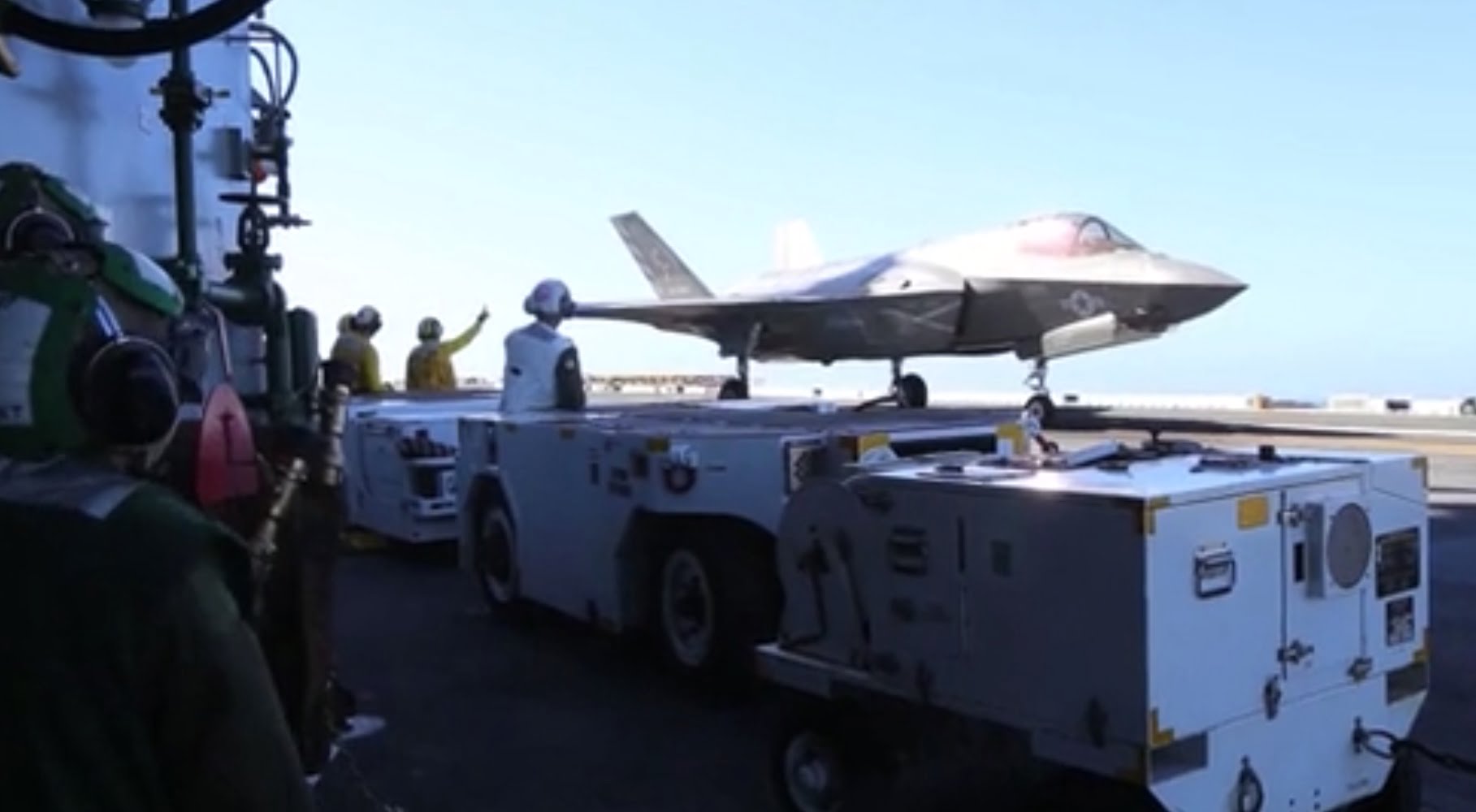By Robbin Laird
rf*@*****fo.com
A significant Shift: Con Ops Customization And Service Provider
The F-35 represents a significant shift in how one will conduct air operations. The F–35 is more than a fifth-generation fighter; it is a first-generation flying combat system. The effects that the F–35 can deliver within the battlespace are flexible, synergistic, and multidimensional (air, ground, maritime). The F–35’s open architecture allows this flying combat system to become the focal point of three core activities: air-to-air, air-to-ground, and air-to-maritime roles and missions. The F–35 will be defined by how its open architecture is customized by national militaries in meeting their perceived priority needs and mix of air, ground, and maritime mission sets. Its combat capabilities will be defined in part by “CONOPS customization.”
One example of an opportunity for CONOPS customization derives from the F–35’s multimodal/multimission capability, which includes the ability to deliver nonkinetic as well as kinetic effects, offering decision makers many options. The F–35 is central to operationalizing the networked battle management environment. It can provide services (communications, intelligence, and electronic support) to others in the battlespace in ways that are transparent to its pilot. Large platforms that used to provide battle management will be supplanted by a force mix of the F–35 and unmanned vehicles, shaping a 21st-century approach to air operations.
CONOPS customization is the reason that the F–35B is of special interest to the Marine Corps, Royal Air Force, Italian navy, and other forces. The F–35B’s short takeoff and vertical landing (STOVL) capability will make possible a different approach to ground-air integration and CONOPS than with that of the F–35 conventional takeoff version. Almost certainly, weaponization and ISR requirements will be modified to work with the STOVL-enabled CONOPS.
Addressing the Robotic Revolution: Building a Core Wolf Pack Capability
An additional aspect in developing joint or coalition CONOPS for the F–35 will revolve around its interaction with other manned and unmanned assets. With regard to manned assets, a key challenge will be to work an effective connectivity battlespace with other manned aircraft, such as the Eurofighter Typhoon and legacy U.S. aircraft. Here, the advantages of each platform in contributing to the air battle and to the type of flexible military force packages that 21st-century air capabilities provide will be the focus of a joint concept of operations.
In addition to the core dynamic of working with a variety of manned aircraft across the joint and coalition battlespace, the F–35 will be highly interactive with the evolution of robotic elements. UAS are not well designed for self-defense. For early entry UAS to stay alive, they need to be part of a wolf pack built around the protective functions of the manned aircraft. As air dominance and air superiority operations succeed, their significance can recede during an operation, allowing the role of unmanned aircraft to increase significantly and, over the course of the operation, supplant manned aircraft in ISR and C2 roles.
The man-machine attributes and computational capabilities of the F–35 provide a significant opportunity to evolve the robotic elements within airspace to provide for data storage, transmission, collection, weapon emplacement, and loitering strike elements, all of which can be directed by the manned aircraft as the centerpiece of a manned-robotic strike or situational awareness wolf pack. Rather than focusing on robotic vehicles as self-contained units with proprietary interfaces and ground stations, the F–35 can be useful in generating common linkages and solutions to combine all into a core wolf pack capability.
David Fulghum of Aviation Week and Space Technology underscored, in effect, why the F-35 is so central to the USAF’s future:
The Pentagon can no longer afford to build specialized weapons on unique platforms for each kind of war it fights—irregular, conventional or cyber. The military has instead launched an effort to mold already converging technologies into sensors that may also be weapons—weapons that can inflict invisible effects, and effects that may be temporary or permanent, blatant or authorless, tactical or strategic in range.
That quest will then shift to a new struggle about how to cluster capabilities, parcel out scarce assets, redefine missions and pay for all the changes with a smaller budget.
The foundation for this will be the F-35 integrated sensor suites and related capabilities as Lt. General Deptula underscores in this week’s interview. The leveraging of the F-35 capabilities will be central to the success of the quest David Fulhum has highlighted.
———-
***Posted April 28th, 2010



